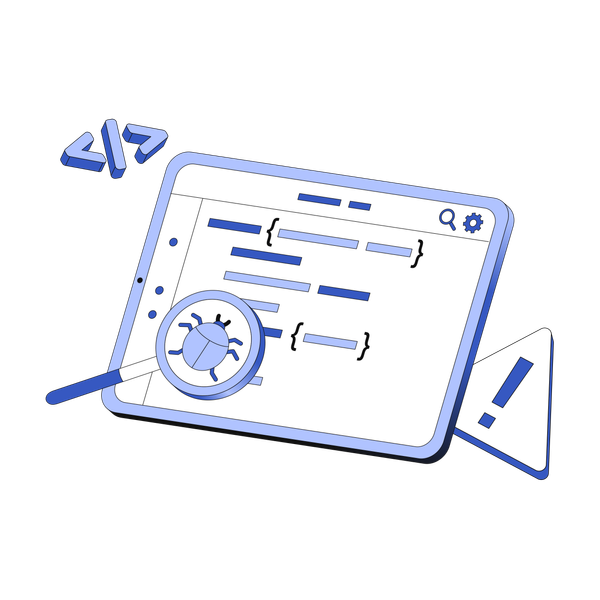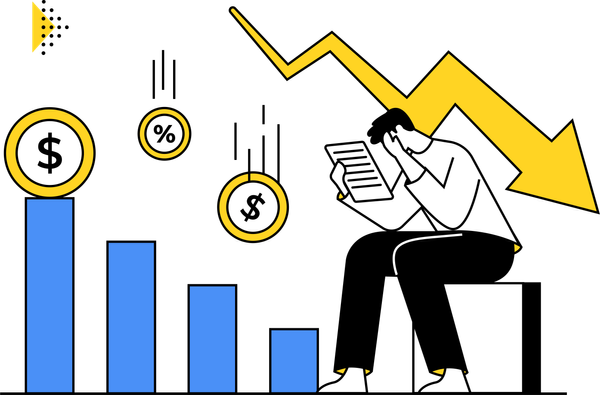The Cost of Marketing a Game: How Much Should You Spend for Success?
Struggling to budget for your game’s marketing? This guide breaks down how much you should spend on ads, influencers, and automation to maximize wishlists and sales. Learn data-driven strategies to market effectively, whether you’re on a tight budget or ready to invest.

Just on Steam alone, 10 years ago only 3,000 games were released on that platform. Today, 19,000 games are released on Steam annually, and likely a lot more will come out each year as tooling continues to improve. However, the problem is that over 80% of these games do not get any wishlists, installs, nor do they make any money, primarily because of the heavy competition. Relying on algorithms to promote your game is no longer viable; you need to bring your own audience.
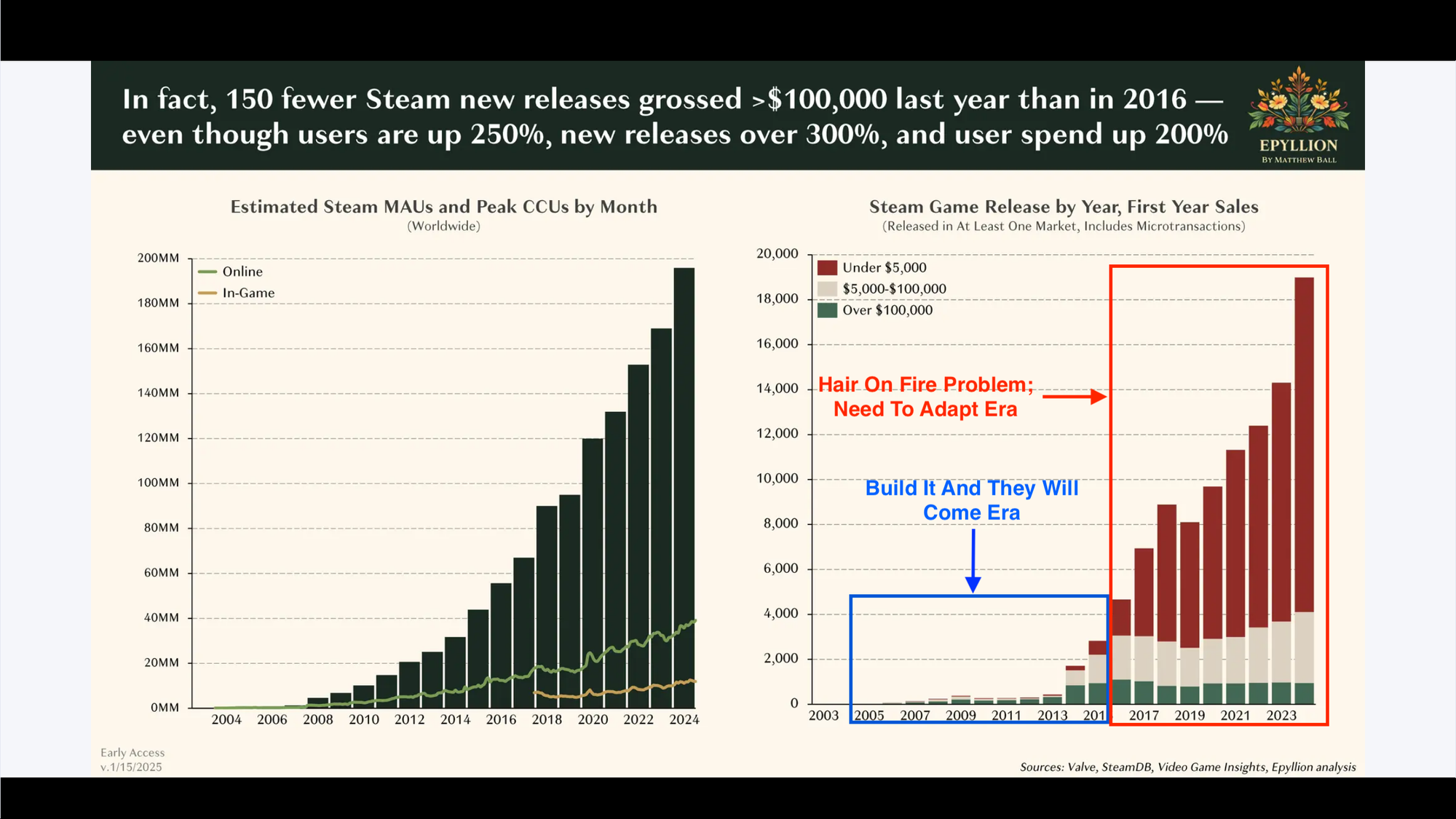
To get a sense of how challenging the situation is, there are approximately 3.34 billion gamers worldwide. If a game sells for $10 and wants to make $5,000, it needs to sell 500 copies. You only need to sell to about 0.000015% of the world’s gamer population. On paper, that sounds feasible, but the issue is that most games do not market themselves effectively.
But 54.5% of games don’t do any marketing at all, and an additional 20% barely spend two hours a week on marketing. More and more developers are realizing they must start marketing, but the question becomes how much they should spend.
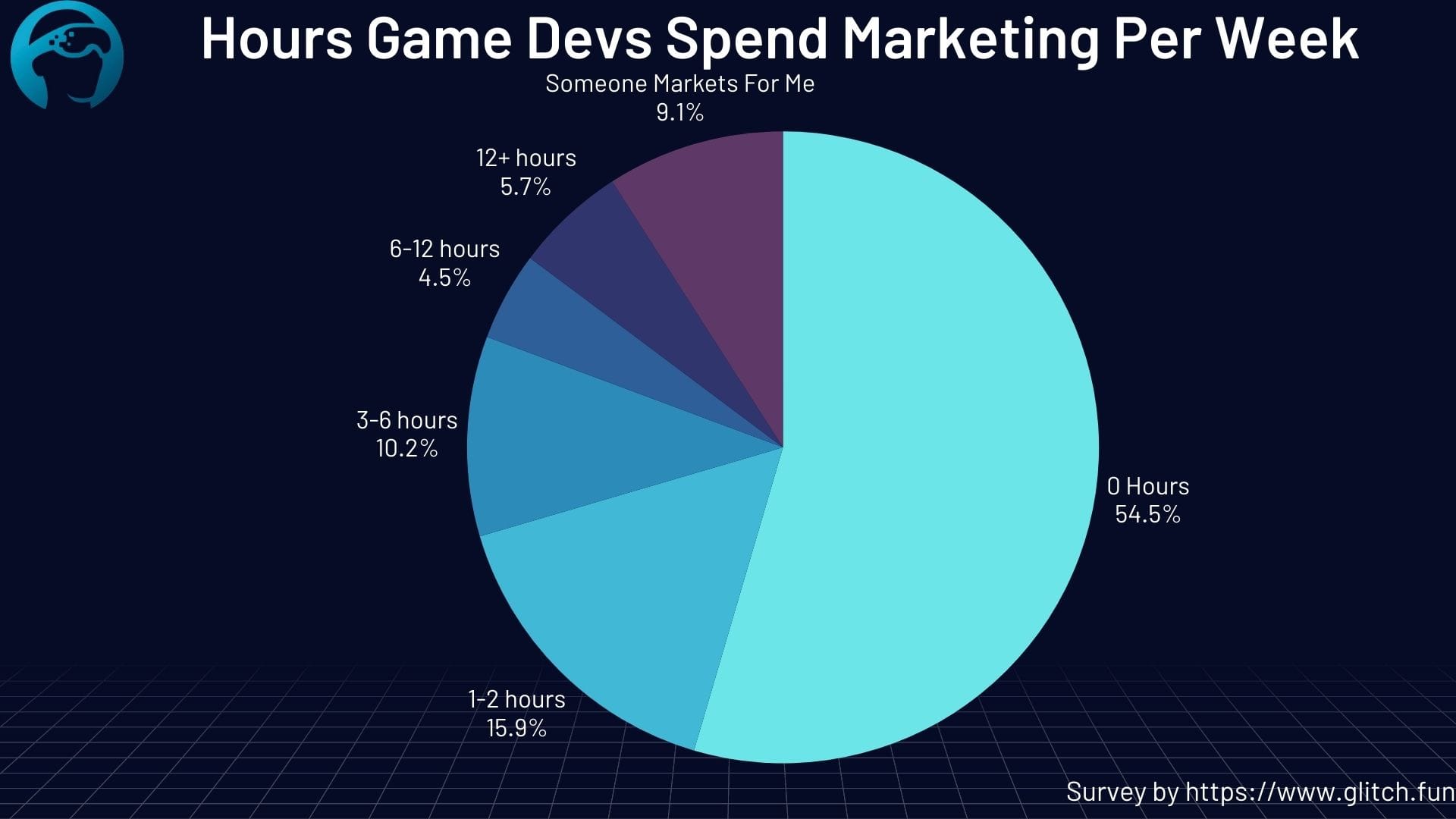
First, we need to make this crystal clear: you DO NOT have to pay for marketing. If you want to market your game yourself, we offer a very comprehensive marketing guide here. It is totally doable; it just takes a lot of time—sometimes it’s like holding down another full-time job.
This article is for developers who are looking for paid marketing options and have premium games. The benefit of paid options is that they save you time, scales very well, and let you focus on development. From advertising, influencers, automation tools, or consultants, this article is designed to give you an idea of what you should pay and how you should measure results.
Setting the Budget for Premium Games
Before you pay for anything, you need to understand your bottom line KPIs based on the stage of your game and your game type, as well as how to calculate them.
- If your game is pre-launch, your main KPI is wishlist additions.
- If your game is a premium game and already launched, you want purchases.
- If you have a F2P game, you want to ensure retention aligns with how long it takes you to turn a profit.
We are only covering premium games here, and in premium games there is a strong dependency on pre-sales, which often directly correlates with the game’s success. To better understand this, let’s turn wishlist growth into profitability through a simple math equation. For simplicity’s sake, we’re going to set your game’s launch date one year from now, or 365 days away. Why one year? We’ve talked at length about how the longer a game is collecting wishlists, the better it performs at launch.
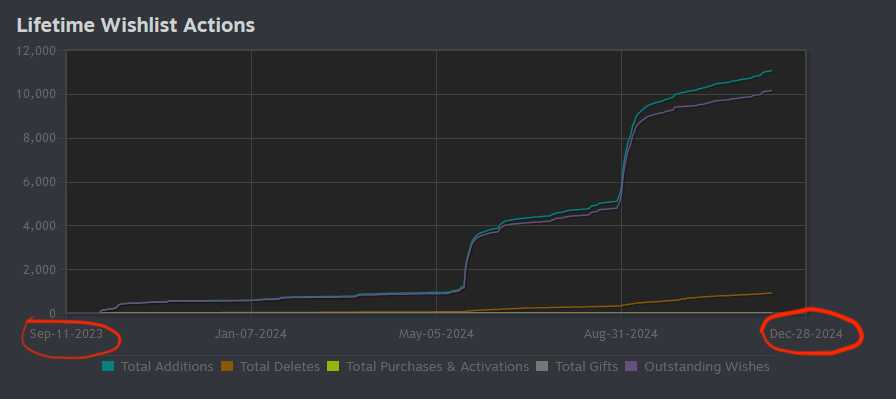
Now let’s break down the facts in an example calculation that you can use similarly for your own game:
- Your game averages 50 wishlists a day on a storefront (Steam, Itch, Epic, etc.).
- Over 365 days, that is 18,250 wishlists in a year, or about 1,520 wishlists a month.
- You estimate that conversion to sales will be 10%, so 1,825 sales.
- You plan to sell your game for $12, so that yields $21,900 in total revenue.
- At an average 10% return rate, you’re left with about 90% of $21,900, which is $19,710 in gross profit.
- Your distribution platform takes 30%, so that leaves $13,797 in net profit.
We now have a solid understanding of what an estimated profit might look like for your game. So, how much should you spend on marketing? A common estimate is 25% to 50% of your net profit. In this example:
- 25% of $13,797 is $3,449.25.
- 50% of $13,797 is $6,898.50.
That suggests a yearly marketing budget of $3,449.25 to $6,898.50 total. If we break that down monthly (over 12 months), it comes out to roughly $287 to $574 per month. Remember, this assumes that you’re getting 1,520 wishlists a month.
For your own game, set up a similar predicted revenue and cost structure, then forecast how much you should set aside for marketing. So, how might you spend this money based on the example above?
Advertising
Advertising means actively promoting your game using various ad platforms, such as Meta/Facebook, X (Twitter), TikTok, and others. Below are average costs for CPM (Cost Per Thousand Impressions) and CPC (Cost Per Click):
CPM (Cost Per Thousand Impressions)
- Facebook/Instagram: $5 – $15
- Twitter: $3 – $10
- YouTube: $6 – $20
- TikTok: $4 – $12
- Google Display Ads: $1 – $5
CPC (Cost Per Click)
- Facebook/Instagram: $0.50 – $2.00
- Twitter: $0.20 – $1.00
- Google Search Ads: $0.50 – $2.00
- YouTube: $0.10 – $0.30 per view
- TikTok: $0.20 – $1.00
Let’s consider two budget scenarios:
- Scenario 1: Lower-end budget ($287/month)
- Impressions (assuming a CPM of $10): ~28,700 impressions
- Clicks (assuming a CPC of $1.00): ~287 clicks
- Wishlists (10% conversion rate from clicks): ~29 wishlists
- Scenario 2: Higher-end budget ($574/month)
- Impressions (CPM of $10): ~57,400 impressions
- Clicks (CPC of $1.00): ~574 clicks
- Wishlists (10% conversion rate): ~57 wishlists
Advertising alone falls short of the 1,520 wishlists that you expect per month. Therefore, advertising by itself might not be worth it unless it’s supplemented with other forms of promotion, ideally organic and unpaid efforts.
Influencer Marketing
Influencer marketing involves having influencers promote your game. Many developers only think about influencers as people who stream on Twitch, but there are many ways to engage influencers, including:
- Streaming on Twitch, YouTube, or TikTok
- Creating reviews about your game
- Producing how-to tutorials about your game
When engaging with influencers, there are different audience levels that correspond to different rates. Ideally, you want to pay based on audience size and engagement rate. Here are some idea ranges (from Shopify.com):
- Nano-influencers (1,000–10,000 followers): $10–$100 per post
- Micro-influencers (10,000–50,000 followers): $100–$500 per post
- Mid-tier influencers (50,000–100,000 followers): $500–$5,000 per post
- Macro-influencers (100,000–500,000 followers): $5,000–$10,000 per post
- Mega-influencers (500,000+ followers): $10,000+ per post
TikTok
- Nano-influencers (1,000–10,000 followers): $5–$25 per post
- Micro-influencers (10,000–100,000 followers): $25–$125 per post
- Mid-tier influencers (100,000–500,000 followers): $125–$1,200 per post
- Macro-influencers (500,000–1 million followers): $1,200–$2,500 per post
- Mega-influencers (1 million+ followers): $2,500+ per post
YouTube
- Nano-influencers (10,000–50,000 followers): $20–$200 per video
- Micro-influencers (50,000–100,000 followers): $200–$5,000 per video
- Mid-tier influencers (100,000–500,000 followers): $5,000–$10,000 per video
- Macro-influencers (500,000–1 million followers): $10,000–$20,000 per video
- Mega-influencers (1 million+ followers): $20,000+ per video
Twitch (Live Streaming)
- Mid-tier influencers (100,000–500,000 followers): Approximately $5,000–$10,000 per sponsored stream
- Macro-influencers (500,000–1 million followers): Approximately $10,000–$20,000 per sponsored stream
- Mega-influencers (1 million+ followers): $20,000+ per sponsored stream
Then comes the organic reach and engagement rate, which is critical to understand:
- Organic Reach: The percentage of followers that an influencer reaches when they post new content. It typically ranges from 2% to 10% on average, so if they have 100,000 followers, expect a post to reach between 2,000 to 10,000 people.
- Engagement Rate: The percentage of those who saw the content and actually engaged with it (likes, comments, shares). A 1% to 5% engagement rate is good.
Here is an example (from our own influencer platform) that shows how engagement rate can translate into wishlists:
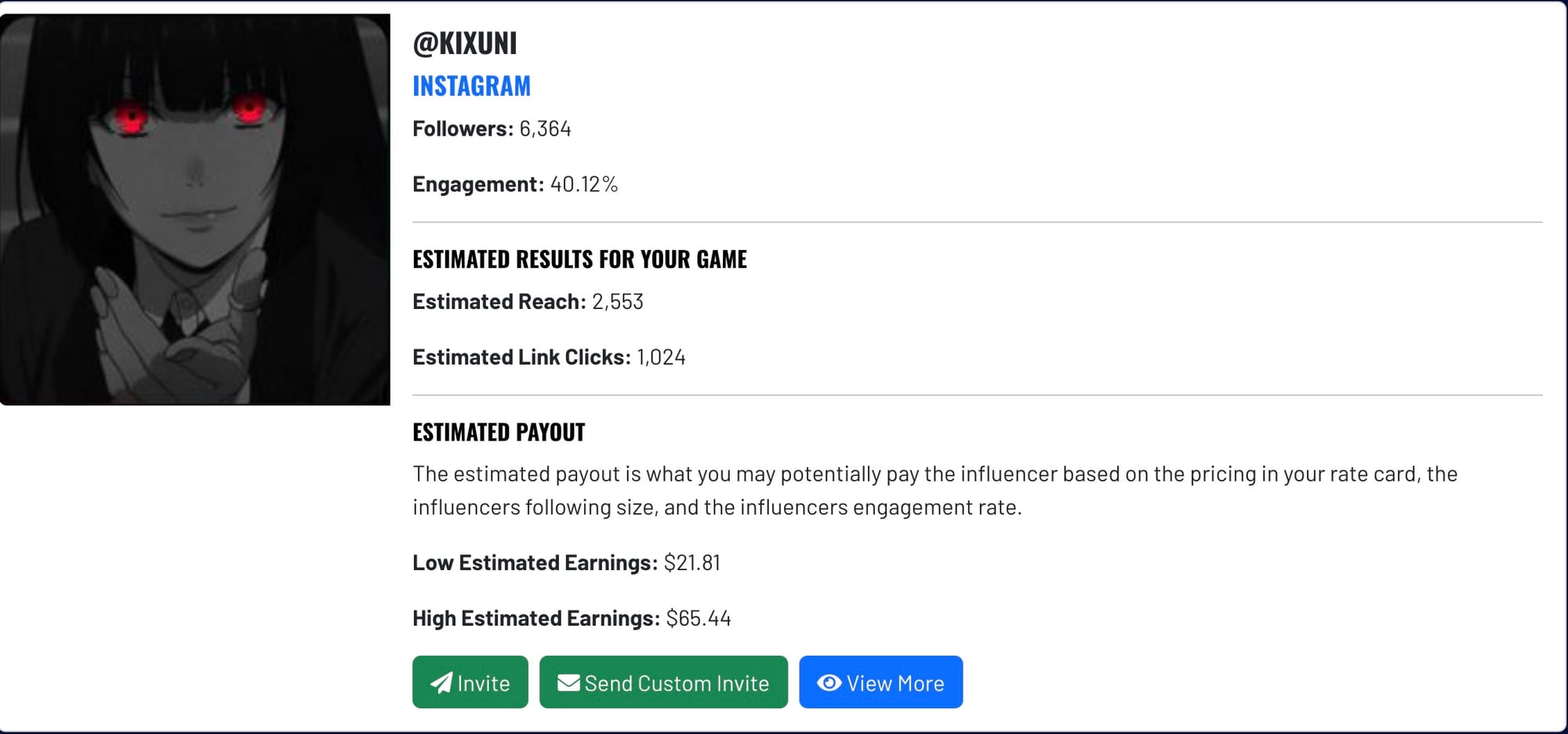
- Suppose an influencer has a 10% organic reach on an audience of 100,000, meaning 10,000 people see the content.
- Of those 10,000 viewers, let’s say 5% engage (500 people).
- From the total that saw the post (10,000 people), 5% decide to wishlist the game—another 500 people.
- If your goal is 1,500 wishlists, you might need about 3 posts (3 x 500 = 1,500 wishlists).
- This could cost anywhere from $375 to $15,000, depending on the influencer’s rate and audience size.
This is why, with influencers, you often hire multiple people to promote your game, because results will vary across different channels and audiences. It’s entirely possible to hit your monthly wishlist target with influencers alone, depending on the influencer you work with and how you set up the contract. If you want to read more about influencer marketing and the process, there is an entire guide here.
Marketing Automation Tools
Marketing automation tools are exactly what they sound like: software that automates much of the marketing process to create growth. This is what we specialize in at Glitch—automating social media marketing to create organic growth.
We’ve seen clients gain anywhere between 10 to 200 wishlists a day, which translates to between 3,650 and 73,000 wishlist additions in a year. The range depends heavily on the quality of the content and the consistency of posting. Here’s how marketing automation typically works with us:
- Content is uploaded to our social media scheduler. This content can be a single image, a short video, a devlog—many forms of content can work.
- The scheduler pulls information about your game and creates optimized posts for each social platform.
- The content is posted, and all the data is tracked. Everything about the content is tagged, from type to emotional tone, media format, time of day, and performance over time.
- Reports then integrate with storefronts (Steam, Epic, Itch, etc.) to show how marketing efforts impact your overall growth.
- Over time, machine learning optimizes future posts based on the historical data collected.
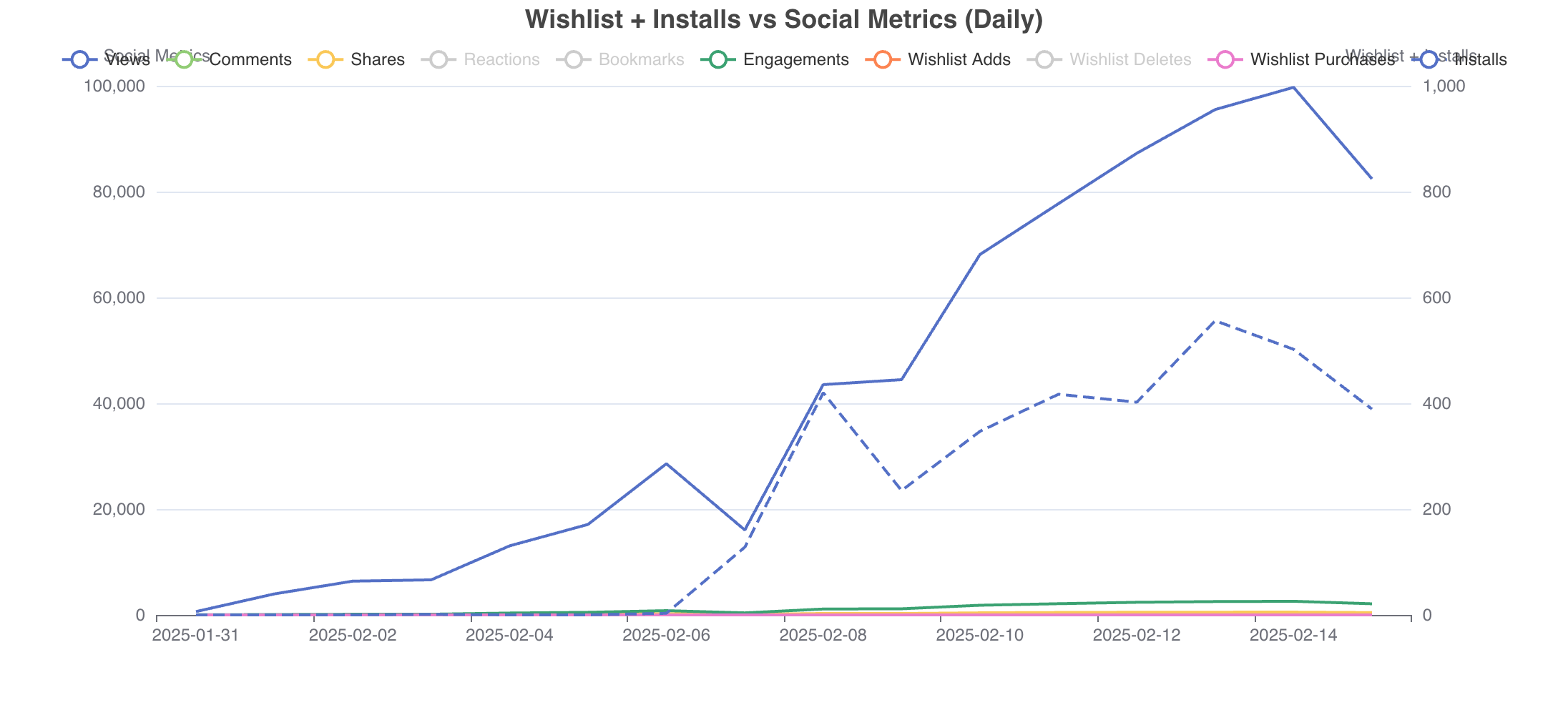
This approach creates organic growth without having to rely on paid advertising. However, for it to work effectively, three things are required:
- A Marketable Game: Marketing automation can’t fix a low-quality game. You need to have a reasonably good game targeted toward a proper audience.
- Consistent Posting: The more content you provide for the scheduler to format and promote, the more growth you can achieve.
- Engagement With Your Audience: Even if marketing automation effectively connects you with people, you still need to engage with them personally. If people give feedback, report bugs, or create fan artwork, you should make an effort to respond and foster that community.
In terms of price points, marketing automation can cost as low as $60 per month, with an average around $240 per month. This can fit within your marketing budget if it reliably produces the 1,500 wishlists you’re aiming for.
Consultants and Agencies
Finally, we arrive at consultants and agencies. To start, a consultant or agency is likely to cost way more than the upper limit of $574 per month. You’re looking at a minimum of $1,000 per month, and sometimes up to $5,000, $10,000, or more on a retainer. However, the return on that investment can be worth it if it’s managed correctly.
Let’s look at some rough math. If 50% of your budget ($574 from our example) is meant to produce around 1,520 wishlists, then paying a consultant $1,000 a month might make you expect around 2,650 wishlist additions. But it’s not a simple 1:1 ratio, because a consultant and agencies can also provide non-tangible services, such as:
- Brand development
- Gathering user feedback
- Finding collaborators or industry contacts
- Conducting data analysis and delivering reports
- Managing all digital properties
- Making your game more marketable overall
For indie devs, you’re often looking for a consultant or agency that can take over the entire marketing of your game and produce high-impact returns. In addition to the above, this typically means:
- PR: Getting your game into publications, blogs, and other content sources that produce thousands of wishlists at once.
- Influencers: Managing influencer relationships, negotiating deals, and driving campaigns that bring notable visibility.
- Social Media Management: Handling all aspects of your social presence and strategy.
- Creative Campaigns: Executing creative or viral campaigns that can drive thousands of wishlists for your game.
We find that developers often have two main fears when working with agencies and consultants:
- Scams: They worry about being scammed. If this is a concern, you can read this article here on identifying scammers.
- Results: Budgets are already thin, and they want guaranteed results for what they’re paying.
Remember, results in marketing are never guaranteed, but the risk of not marketing at all is typically greater than if you do nothing. You can, however, manage results and set realistic expectations by:
- Setting Up Timelines: Determine what deliverables you expect within a specific timeframe.
- Asking For Weekly Updates: Have short, weekly meetings to review last week’s outcomes and plan for the next week.
- Knowing Your Numbers: Understand what results are considered good and which ones fall short.
- Ending Contracts If It’s Not Working Out: If expectations are not being met, be sure there’s a clear way to end the contract. And track your numbers and data so you know when things are not working.
Combined Efforts
You can also combine multiple efforts at different times to optimize your strategy. For example:
- 1–2 years out: Use marketing automation to build up your wishlists organically.
- 6 months out: Engage with a few influencers to test the waters of influencer marketing.
- In the final 2–3 months: Bring on consultants to handle PR, influencers, and other special activation campaigns.
- In the last month: Turn on advertising.
By combining multiple efforts at the right time, you can create the most impactful strategy for your game. Your budget will change and increase as your ramp up, but your wishlist growth should also.
Strengthening Your Game’s Future
Bringing all these elements together—advertising, influencer marketing, automation tools, and professional consulting—creates a powerful, multi-pronged approach to promoting your premium game. While each individual strategy has its own costs, time requirements, and expected outcomes, the real key to success is combining them in a smart way that aligns with your budget, your game’s stage of development, and your long-term goals.
Whether you’re operating on a modest budget or looking to invest heavily in a consultant, a well-thought-out marketing plan is what ultimately separates the games that thrive from those that fade away. Put in the time, allocate your resources wisely, and watch your wishlists—and your profits—grow.


